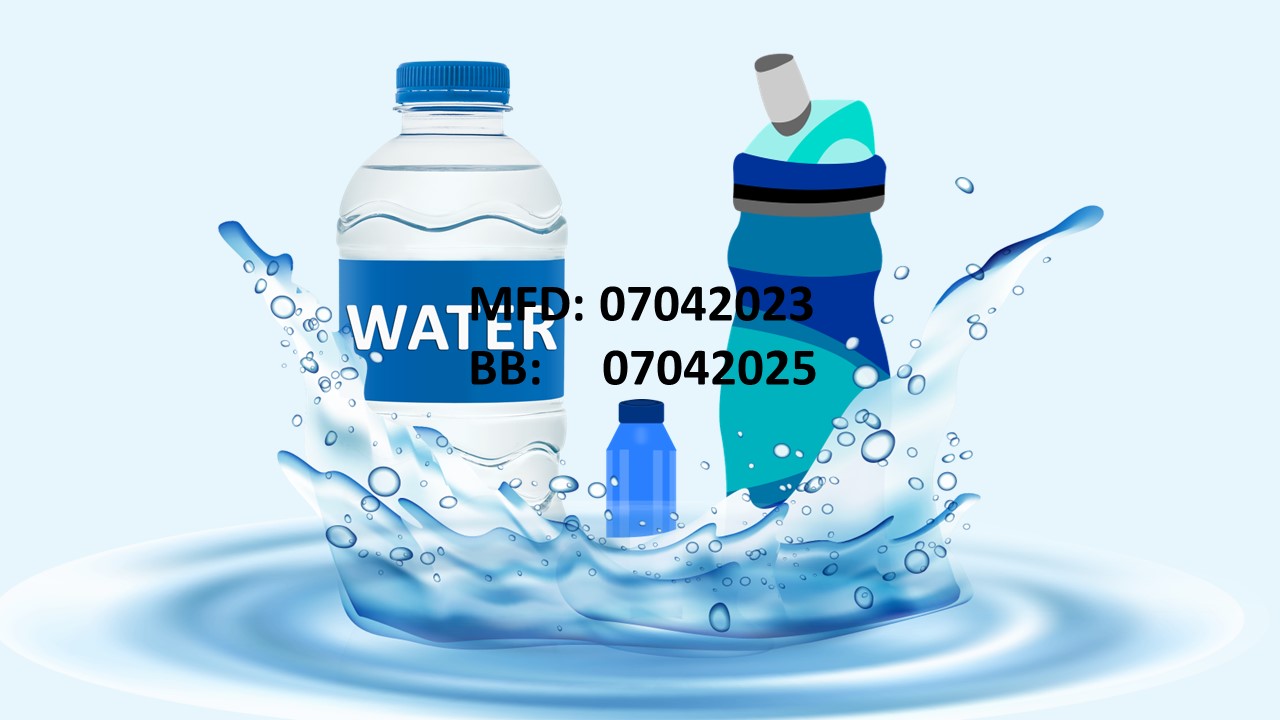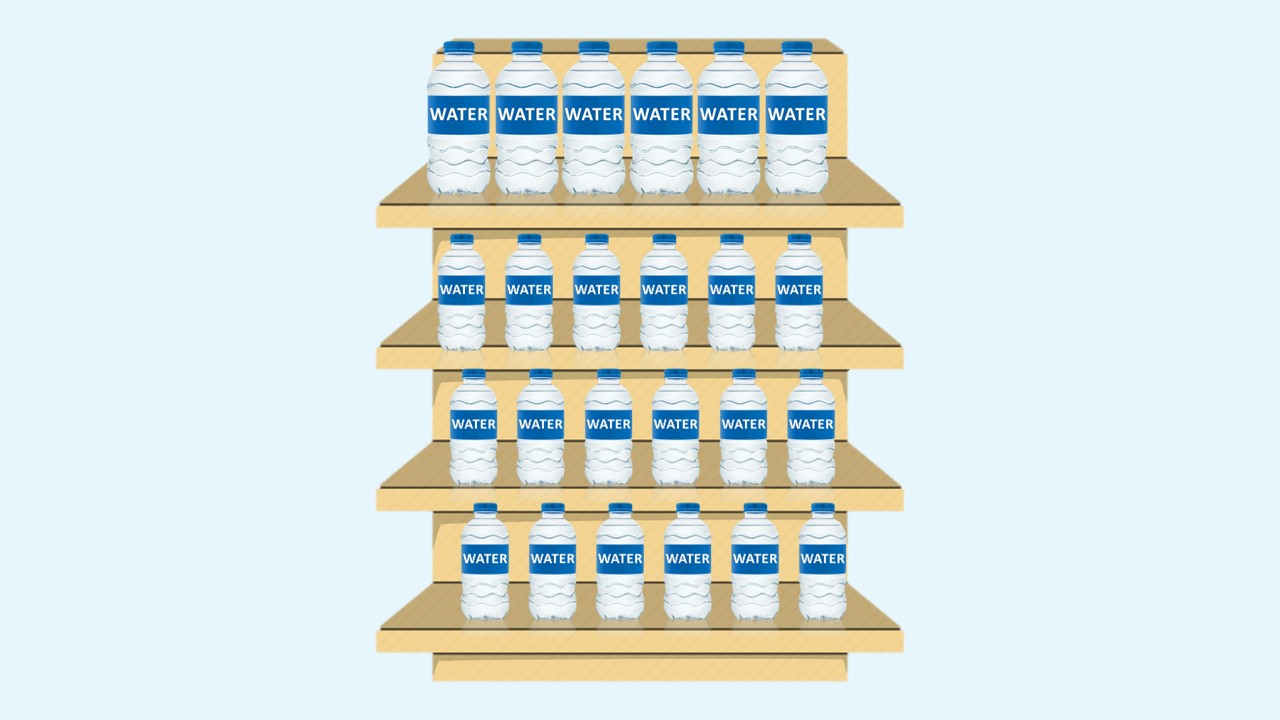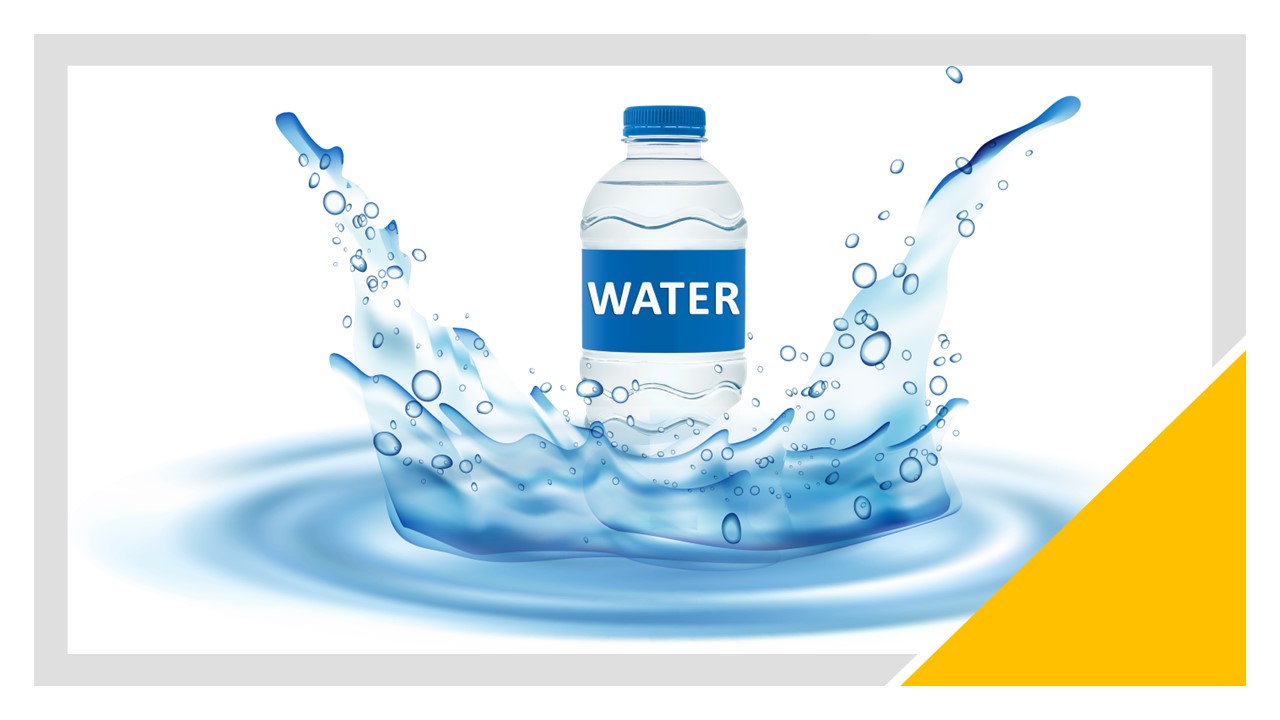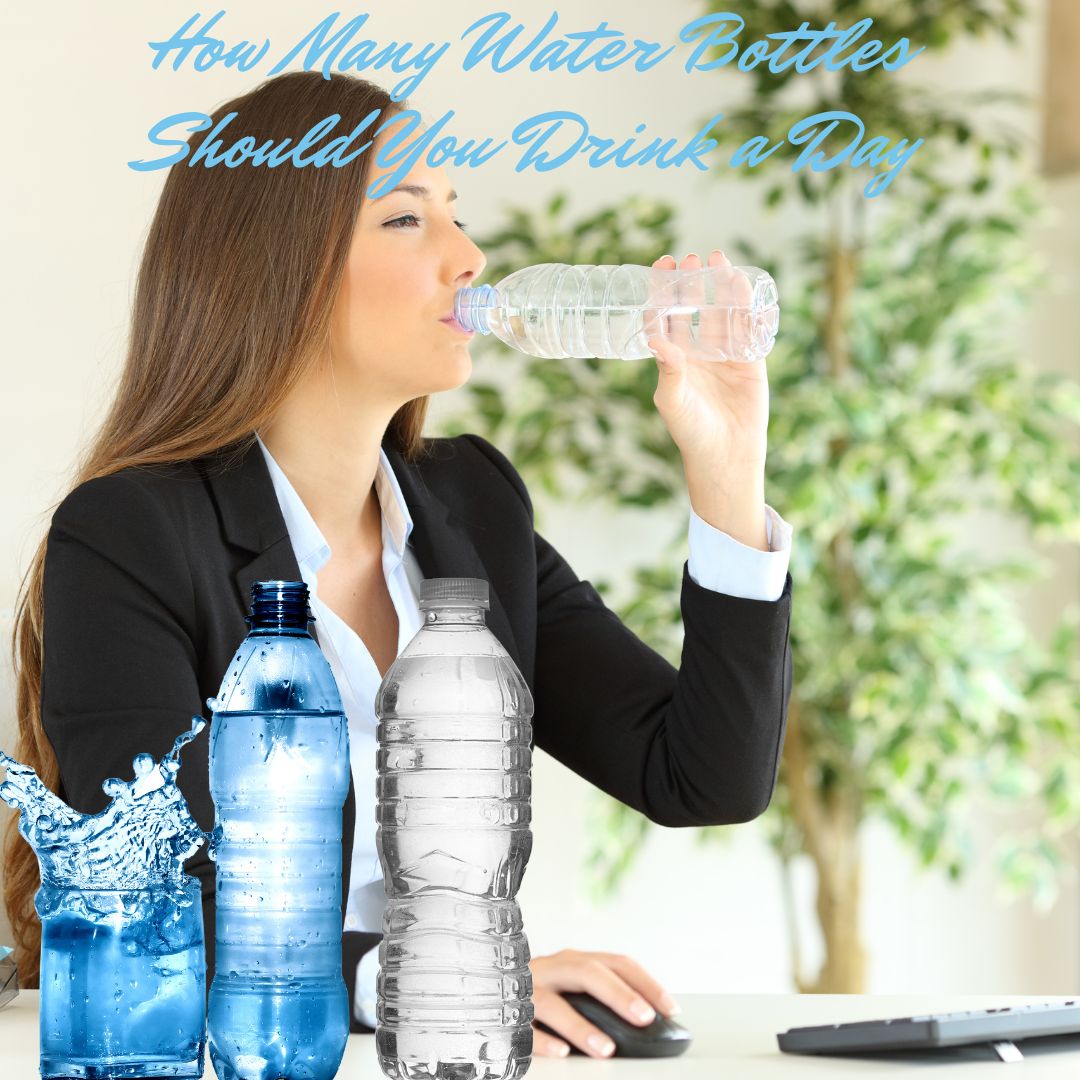How Long Do Water Bottles Last
Water bottles have become an essential part of our daily lives, accompanying us on hikes, workouts, and even in our workspaces. But have you ever wondered, how long do water bottles last? With care, water bottles can last as long 10 years or more but it depends on the bottle’s material.
The lifespan of water bottles can vary significantly depending on several factors. One crucial aspect to consider is the material used in their manufacturing. Plastic water bottles tend to have a shorter lifespan of around 5 – 10 years compared to other materials such as glass, aluminum and stainless that can last a lifetime.
In this article, we will explore the factors that affect the lifespan of water bottles, including exposure to heat, sunlight, and repeated use. We will discuss the durability and expected lifespan of different materials, such as plastic, stainless steel, glass, and aluminum, backing our claims with research and scientific findings.
How Long Do Water Bottles Last
The lifespan of water bottles such as Takeya, 4 Ocean and Iron Flask can vary depending on several factors, including the material of the bottle, frequency of use, care and maintenance, and exposure to external conditions.
Research indicates that plastic bottles can come in different sizes and last anywhere from 5 to 10 years with regular use. However, exposure to heat, sunlight, and repeated use can accelerate their degradation, resulting in reduced durability.
Here’s a general overview of how long water bottles made from different materials typically last:
1. Plastic Water Bottles
Plastic water bottles, such as those made from PET (polyethylene terephthalate) or HDPE (high-density polyethylene), are commonly used and relatively inexpensive. With proper care, these bottles can last for 5 – 10 years.
However, they may start showing signs of wear and tear over time, including scratches, discoloration, or the development of an odor. Repeated use and exposure to heat or sunlight can accelerate the degradation process.
Plastic water bottles, particularly those made from PET (Polyethylene Terephthalate) or HDPE (High-Density Polyethylene), have a lifespan that can be influenced by various factors. Here’s a detailed overview of the lifespan of plastic water bottles and the factors that can affect their longevity:
Lifespan of Plastic Water Bottles
1. Single-Use PET Bottles: Single-use PET bottles are typically designed for one-time use and are not intended for long-term use.
Their lifespan is limited to a single use, and they are often discarded after consumption. Reusing single-use PET bottles may lead to the degradation of the plastic and compromise the bottle’s integrity.
2. Reusable HDPE Bottles: HDPE bottles are more durable than single-use PET bottles and are designed for multiple uses. With proper care, including regular cleaning and maintenance, HDPE bottles can last for a few years. However, their lifespan can vary based on usage and exposure to external conditions.
Factors Affecting Longevity
- Exposure to Heat: Prolonged exposure to high temperatures, such as leaving a plastic water bottle in a hot car or exposing it to direct sunlight, can accelerate the degradation process. Heat can cause the plastic to release chemicals and affect the bottle’s structural integrity, reducing its lifespan.
- Exposure to Sunlight: Ultraviolet (UV) radiation from sunlight can also contribute to plastic degradation. Over time, exposure to UV rays can lead to discoloration, weakening of the plastic, and the potential for leaching of harmful substances.
- Repeated Use: Reusing plastic water bottles can result in wear and tear, such as scratches and scuff marks, which can accumulate over time and compromise the bottle’s durability. It is recommended to inspect reusable plastic bottles regularly and replace them if they show signs of degradation.
Plastic Degradation and Chemical Leaching
- Over time, plastic water bottles can undergo degradation, particularly when exposed to heat, sunlight, or repeated use. This degradation can result in the release of microplastics and potentially harmful chemicals into the water.
- It is important to note that the extent of chemical leaching depends on the type of plastic, storage conditions, and other factors. However, it is generally recommended to avoid reusing single-use PET bottles to minimize the potential for chemical leaching.
Environmental Impact
- Plastic water bottles, especially single-use ones, contribute to the growing issue of plastic pollution. When not properly disposed of or recycled, plastic bottles can end up in landfills or natural environments, where they can take hundreds of years to decompose. This has severe consequences for ecosystems and wildlife.
- Choosing reusable water bottles made from durable materials like stainless steel or glass can help reduce the environmental impact associated with plastic bottles.
RELATED: Thrilling West Palm Beach Water Sports Activities That Will Leave You Breathless
2. Stainless Steel Water Bottles
Stainless steel water bottles are known for their durability and longevity. They can withstand impacts, resist corrosion, and maintain their appearance for a long time.
With proper care and maintenance, stainless steel water bottles can last for decades. Regular cleaning and avoidance of dents or scratches can help extend their lifespan.
Stainless steel water bottles are known for their durability and resistance to various forms of damage. Here’s an overview of their durability features and maintenance practices that can contribute to prolonging their lifespan:
Durability and Resistance
- Corrosion Resistance: Stainless steel bottles are highly resistant to corrosion, making them ideal for both indoor and outdoor use. They can withstand exposure to moisture, humidity, and liquids without rusting or degrading.
- Dent and Scratch Resistance: Stainless steel bottles are generally resistant to dents and scratches, making them more resilient to accidental impacts or rough handling compared to other materials like plastic or glass. While they are not entirely immune to dents or scratches, they tend to maintain their structural integrity well.
Special Coatings and Features
- Powder Coating: Some stainless steel bottles feature a powder coating on the exterior, which provides additional protection against scratches, chips, and fading. This coating can enhance the bottle’s durability and aesthetic appeal.
- Double-Wall Insulation: Many stainless steel bottles have double-wall insulation, which helps maintain the temperature of the contents. This feature also adds a layer of protection and can contribute to the longevity of the bottle.
Proper Cleaning and Maintenance
- Regular Cleaning: Stainless steel bottles should be cleaned regularly to prevent the buildup of residue, odors, or bacteria. Use mild dish soap, warm water, and a bottle brush to clean the interior and exterior. Avoid using abrasive cleaners or scrubbers that could scratch the surface.
- Drying and Storage: After cleaning, ensure the bottle is thoroughly dried to prevent the growth of bacteria or the development of unpleasant odors. Store the bottle with the cap off to allow airflow and prevent moisture buildup.
- Avoid Extreme Conditions: While stainless steel bottles are generally resistant to damage, extreme conditions can still impact their lifespan. Avoid exposing the bottle to extreme temperatures, as this can affect the integrity of the materials or compromise any insulation features.
- Impact Prevention: Take care to avoid dropping or subjecting the bottle to rough impacts, as this can dent or damage the stainless steel. Using a protective sleeve or carrying pouch can provide an extra layer of protection during transportation.
3. Glass Water Bottles
Glass water bottles are relatively fragile compared to other materials. However, they can last a long time if handled with care. Glass bottles are resistant to staining and odor retention, making them suitable for long-term use.
Their lifespan depends on how well they are protected from impacts and potential breakage. The use of protective sleeves or coatings can help increase their durability.
Glass water bottles offer certain advantages in terms of durability, cleanliness, and taste preservation. Here’s an exploration of their durability, resistance to impact and scratches, breakage potential, and methods to enhance their longevity:
Durability and Resistance
- Impact Resistance: Glass water bottles are relatively resistant to impacts and can withstand everyday handling. They are less prone to denting or scratching compared to materials like plastic or aluminum. However, they are not completely shatterproof or unbreakable.
- Scratch Resistance: Glass bottles, while generally resistant to scratches, can develop minor surface abrasions over time with regular use. However, these scratches usually do not affect the bottle’s performance or integrity.
Breakage Potential and Protective Measures
- Breakage: One of the main concerns with glass water bottles is their potential for breakage, especially if dropped or subjected to strong impacts. While glass is inherently fragile, many manufacturers produce glass bottles that are designed to be more durable and resistant to breaking.
- Protective Sleeves or Coatings: To enhance the longevity and resilience of glass bottles, protective sleeves or coatings are available. These accessories provide an extra layer of insulation and cushioning, reducing the risk of breakage from minor impacts or drops. Some sleeves are made of materials like silicone or neoprene, offering added protection and grip.
Advantages in Cleanliness and Taste Preservation
- Cleanliness: Glass is non-porous and does not retain odors or flavors from previous uses. This makes glass water bottles highly resistant to bacterial growth and allows for easy cleaning. They are often considered a hygienic choice for storing water or other beverages.
- Taste Preservation: Glass bottles are known for preserving the taste and purity of beverages. Unlike certain plastic materials that may impart a slight flavor to liquids, glass does not leach chemicals or alter the taste of the contents. This makes glass bottles an excellent option for those who prefer the natural taste of their beverages.
Proper Handling and Care
- Handle with Care: While glass bottles are generally durable, they require careful handling to minimize the risk of breakage. Avoid dropping the bottle or subjecting it to rough impacts.
- Cleaning and Maintenance: Regularly clean glass bottles with mild soap and warm water to keep them hygienic and free from residue. Use a bottle brush to reach all areas. Inspect the bottle for any signs of damage or weakness and replace it if necessary.
4. Aluminum Water Bottles
Aluminum water bottles are lightweight and known for their durability. They are resistant to corrosion and can withstand impacts well. With proper care, such as avoiding dents and cleaning them regularly, aluminum bottles can last for several years (even more than 10 years).
Aluminum water bottles are a popular choice due to their durability, longevity, and resistance to corrosion and impact. Here’s an exploration of their durability, resistance to corrosion and impact, coatings or linings to prevent flavor transfer or degradation, and proper care to maintain their lifespan:
Durability and Resistance
- Corrosion Resistance: Aluminum bottles are highly resistant to corrosion, making them suitable for use in a variety of environments and conditions.
- Impact Resistance: Aluminum bottles are generally durable and resistant to impacts, making them a good choice for outdoor activities or rough handling.
Coatings or Linings
- Internal Linings: To prevent flavor transfer or degradation, aluminum bottles may have an internal lining or coating. This lining helps to prevent the metal from leaching into the contents of the bottle and can also help to preserve the flavor of the beverage.
- External Coatings: Some aluminum bottles also have external coatings or finishes that provide added protection against scratches or other types of wear and tear.
Proper Care and Maintenance
- Cleaning: To maintain the longevity of aluminum bottles, it is important to clean them regularly. Mild soap and water can be used to remove any residue or buildup inside or outside the bottle.
- Avoiding Abrasives: To prevent scratches or damage to the external coating, it is important to avoid using abrasive materials or harsh cleaning products when washing aluminum bottles.
- Storage: Proper storage can also help to maintain the lifespan of aluminum bottles. Storing them in a cool, dry place away from direct sunlight can help prevent damage or degradation.
Recyclability
- Aluminum bottles are highly recyclable and can be recycled repeatedly without losing quality or performance. This makes them a more eco-friendly option than some other types of bottles.
It’s important to note that these are general guidelines, and individual results may vary. Factors such as the quality of the bottle, manufacturing processes, and user habits can all influence the lifespan of a water bottle.
Regular inspection for signs of wear and tear, proper cleaning, and adherence to any manufacturer’s guidelines can help extend the longevity of water bottles across all materials.
Tips For Extending The Lifespan Of Water Bottles
There are several additional factors that can influence the longevity of water bottles. Here’s an overview of these factors affecting the longevity of your water bottle and tips for extending the lifespan of water bottles:
Factors Affecting Water Bottle Longevity
- Frequency of Use: The more frequently a water bottle is used, the more wear and tear it may experience over time. Constant use, including refilling, opening, and closing the bottle, can contribute to the degradation of materials and potentially reduce its lifespan. Consider rotating between multiple bottles to distribute the usage.
- Exposure to Extreme Temperatures:
- Hot Liquids: Some water bottles are designed to withstand hot liquids, while others may not be suitable for temperatures above a certain threshold. Using a water bottle beyond its recommended temperature range can compromise its structural integrity and reduce its lifespan.
- Freezing: Freezing water inside a bottle can cause expansion, potentially leading to cracks or damage. Check the manufacturer’s guidelines regarding the bottle’s suitability for freezing liquids.
- Cleaning Methods:
- Gentle Cleaning: Avoid using abrasive materials, harsh scrubbers, or abrasive cleaners that can scratch or damage the surface of the water bottle. Opt for mild dish soap, warm water, and a soft brush or sponge to clean the bottle effectively without causing unnecessary wear.
- Avoid Soaking: Prolonged soaking or submerging the bottle in water or cleaning solutions may lead to degradation or damage. Clean the bottle promptly and avoid leaving it submerged or soaking for extended periods.
- Overall Maintenance:
- Regular Inspections: Routinely inspect your water bottle for any signs of wear, such as cracks, leaks, or weakened seals. If you notice any damage or compromised parts, it is advisable to replace the bottle to ensure safe usage.
- Replace Worn-Out Parts: For bottles with replaceable parts like lids or seals, periodically check these components for signs of wear or deterioration. If necessary, replace them with compatible and high-quality replacements to maintain the bottle’s performance.
- Avoid Overfilling: Avoid overfilling the bottle beyond its designated capacity, as this can put excess strain on the bottle’s structure, potentially leading to leaks or damage.
- Proper Storage:
- Dry Storage: Ensure that the water bottle is completely dry before storing it to prevent the growth of mold or bacteria. Moisture can also contribute to the degradation of certain materials.
- Ventilation: Store the water bottle with the cap off or slightly open to allow air circulation and prevent any potential odor or condensation buildup.
By considering these factors and following proper maintenance practices, you can extend the lifespan of your water bottles. Regular inspections, appropriate cleaning methods, and proper storage are essential for ensuring the longevity and optimal performance of your water bottles.
READ ALSO: Water Sports Myrtle Beach: Discover the Thrill And Have Fun
How To Choose Long Lasting Water Bottles
When selecting a durable water bottle, there are several factors to consider ensuring you make an informed purchase decision. Here are some tips and considerations to guide you:
Material
- Stainless Steel: Look for high-quality stainless steel bottles that are known for their durability, resistance to corrosion, and impact. Opt for food-grade stainless steel bottles to ensure they are safe for storing beverages.
- Glass: Choose glass bottles made from durable, shatter-resistant glass. Look for options with protective sleeves or coatings to enhance their durability and impact resistance.
- BPA-Free Plastic: If you prefer a lightweight option, opt for BPA-free plastic bottles. Look for bottles made from durable plastics like PET (Polyethylene Terephthalate) or HDPE (High-Density Polyethylene).
Intended Use
- Activity and Environment: Consider the activities and environments in which you plan to use the water bottle. For outdoor adventures or sports activities, opt for bottles with enhanced durability and features like impact resistance or insulation.
- Portability: If you need a water bottle for everyday use or travel, consider factors like size, weight, and ease of carrying. Look for bottles with features like leak-proof caps, handles, or carabiner clips for convenience.
Durability Features
- Impact Resistance: Look for bottles that are designed to withstand impacts and rough handling, especially if you plan to use them during outdoor activities or in environments where accidental drops may occur.
- Scratch Resistance: Consider bottles with coatings or finishes that offer scratch resistance, as this can help maintain their appearance and longevity.
- Protective Sleeves: Some bottles come with removable sleeves made of materials like silicone or neoprene. These sleeves provide an extra layer of protection against impacts and can enhance durability.
Warranty and Customer Reviews
- Warranty: Check if the water bottle comes with a warranty, as this indicates the manufacturer’s confidence in its durability and longevity. A warranty can provide added assurance and protection against potential defects or issues.
- Customer Reviews: Read customer reviews and ratings to get insights into the experiences of other users. Look for feedback on durability, longevity, and overall satisfaction with the product.
Maintenance and Care
Consider the maintenance requirements of the water bottle. Look for bottles that are easy to clean, preferably dishwasher-safe or with wide openings for thorough cleaning. Avoid bottles with complex parts that may be difficult to maintain or replace.
RELATED: Exploring the Best Water Sports Destin FL – Ride the Waves of Adventure!
Sustainable Alternatives To Conventional Water Bottles
As sustainability becomes a growing concern, several emerging trends and sustainable alternatives to conventional water bottles have gained popularity. Here are a few options worth considering, along with their durability, pros, cons, and environmental benefits:
1. Reusable Silicone Bottles
- Durability: Silicone bottles are known for their flexibility and durability. They can withstand impacts and are resistant to scratches and dents.
- Pros: Silicone bottles are lightweight, collapsible, and easy to carry when empty. They are also dishwasher-safe and can withstand a wide range of temperatures.
- Cons: Silicone bottles may retain odors or flavors from previous uses. While they are generally durable, extreme heat or sharp objects can damage them.
- Environmental Benefits: Reusable silicone bottles help reduce single-use plastic waste and can be used for a long time. They are a versatile and eco-friendly alternative.
2. Collapsible Bottles
- Durability: Collapsible bottles are typically made from flexible materials like silicone or BPA-free plastics. They are designed to withstand folding and bending without losing their shape.
- Pros: Collapsible bottles are highly portable and take up minimal space when empty. They are lightweight, leak-proof, and often come with carabiner clips for easy attachment to bags.
- Cons: Collapsible bottles may be less sturdy than rigid options and may be more susceptible to punctures or tears if not handled with care.
- Environmental Benefits: These bottles encourage reusability and reduce waste by eliminating the need for disposable bottles. Their space-saving design also reduces packaging and transportation impacts.
3. Biodegradable Bottles
- Pros: Biodegradable bottles have a reduced environmental impact as they break down into natural components over time. They can be composted or recycled in some cases.
- Cons: Some biodegradable bottles require specific disposal conditions, such as industrial composting facilities, to decompose properly. They may also have a shorter lifespan compared to traditional water bottles.
- Environmental Benefits: Biodegradable bottles offer a reduced carbon footprint and help reduce plastic pollution. They are a viable option for those seeking environmentally friendly alternatives.
It’s important to note that while these alternative options offer sustainability benefits, each has its own considerations regarding durability, maintenance, and compatibility with different activities or environments. Consider your specific need.
How To Clean And Maintain Water Bottles Properly
Proper cleaning and maintenance are essential for maximizing the lifespan of water bottles and ensuring their safe and hygienic use. Here are some instructions and tips on how to clean and maintain water bottles effectively:
1. Regular Cleaning Routine
– Rinse After Use: Rinse the water bottle with warm water immediately after each use to remove any residual liquids and prevent odors or stains from developing.
– Use Mild Dish Soap: For routine cleaning, use mild dish soap and warm water. Apply a small amount of soap to the bottle’s interior, exterior, and cap, and scrub gently with a soft brush or sponge. Pay extra attention to areas with potential buildup, such as the mouthpiece or threads of the cap.
– Thoroughly Rinse: Rinse the bottle thoroughly with clean water to remove any soap residue before refilling it.
2. Removing Odors and Stains
– Baking Soda Solution: For stubborn odors or stains, create a solution of warm water and baking soda. Fill the bottle halfway with warm water, add a teaspoon of baking soda, and let it sit for a few hours or overnight. Rinse the bottle thoroughly with clean water afterward.
– Vinegar Solution: Another option is to use a mixture of equal parts water and white vinegar. Fill the bottle halfway with the solution, let it sit for a few hours, and then rinse thoroughly. Vinegar can help eliminate odors and sanitize the bottle.
RELATED: pH Level In Water Bottles
3. Deep Cleaning and Maintenance
– Deep Clean with Bottle Brushes: Periodically use bottle brushes or pipe cleaners to reach into narrow or hard-to-reach areas, such as the bottle’s neck or straw, to remove any buildup or residue.
– Avoid Harsh Chemicals: Avoid using bleach or harsh chemical cleaners, as they can degrade the materials and leave behind harmful residues. Stick to mild dish soap, baking soda, or vinegar for safe and effective cleaning.
– Inspect Seals and Parts: Regularly inspect the seals, gaskets, and other components of the water bottle for signs of wear or damage. Replace any worn-out or compromised parts to ensure proper sealing and functionality.
– Store with Cap Off: When not in use, store the water bottle with the cap off or slightly ajar to allow air circulation and prevent any potential odor or condensation buildup.
RELATED: Does Water Bottles Expire
Neglecting Proper Maintenance And Cleaning Can Lead To Various Issues, Including:
– Bacteria and Mold Growth: Failure to clean the bottle regularly can promote the growth of bacteria, mold, and other pathogens, potentially compromising your health and the taste of the beverages.
– Odors and Stains: Residual liquids or particles left in the bottle can result in unpleasant odors and stains over time.
– Degradation of Materials: Accumulated residue, harsh cleaning agents, or neglecting to inspect and replace worn-out parts can contribute to the degradation of materials, reducing the bottle’s lifespan and potentially compromising its functionality.
By following these cleaning and maintenance instructions, you can keep your water bottle clean, odor-free, and in optimal condition for long-lasting use. Regular care and proper hygiene practices ensure that your water bottle remains a safe and reliable companion for your hydration needs.
RELATED: Why Does My Water Bottle Smell Even After Washing – Should You Be Concerned?
The Bottom Line
Understanding the question “how long do water bottles last” is essential for making informed choices and ensuring long-lasting, sustainable hydration solutions.
By considering factors such as material durability, proper maintenance, and responsible disposal, we can extend the usability of our water bottles while minimizing our environmental impact.
Choose wisely, care for your bottle diligently, and together, let’s contribute to a more sustainable future. Start making a difference today.



